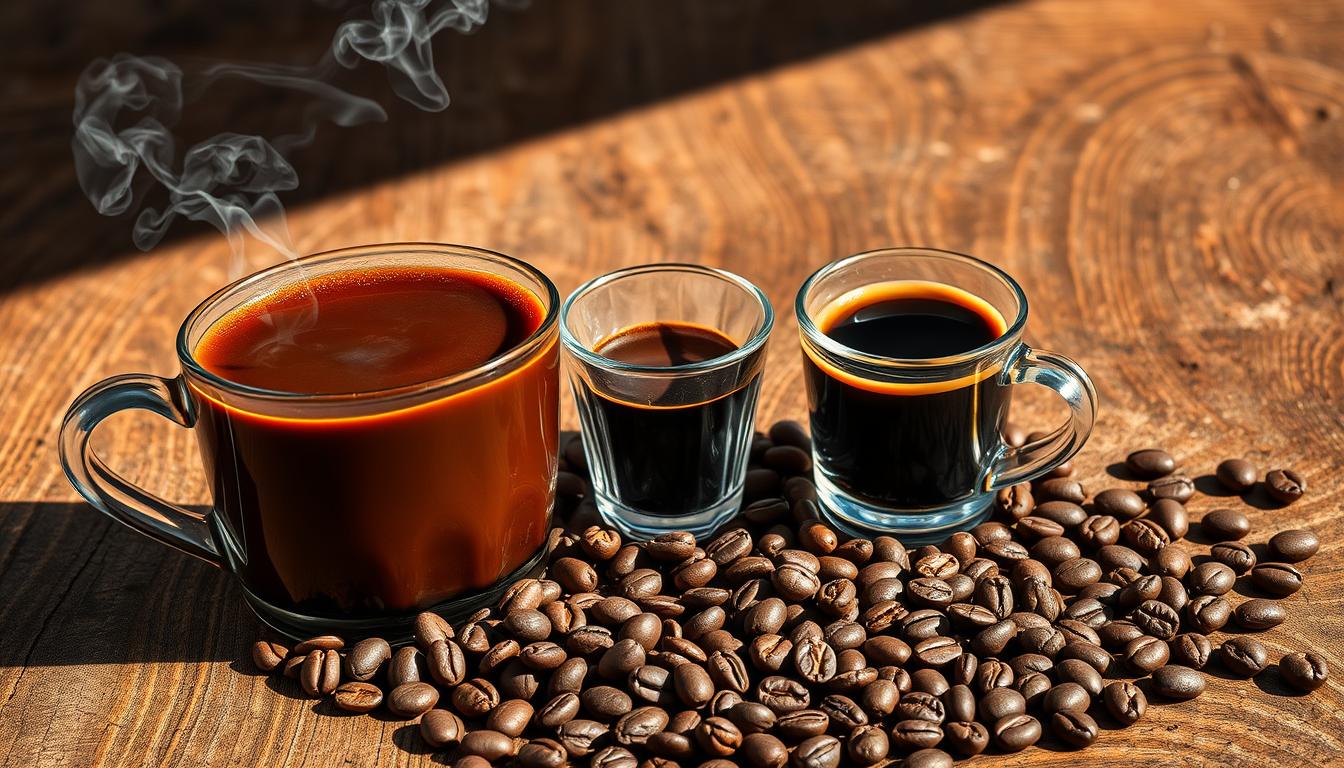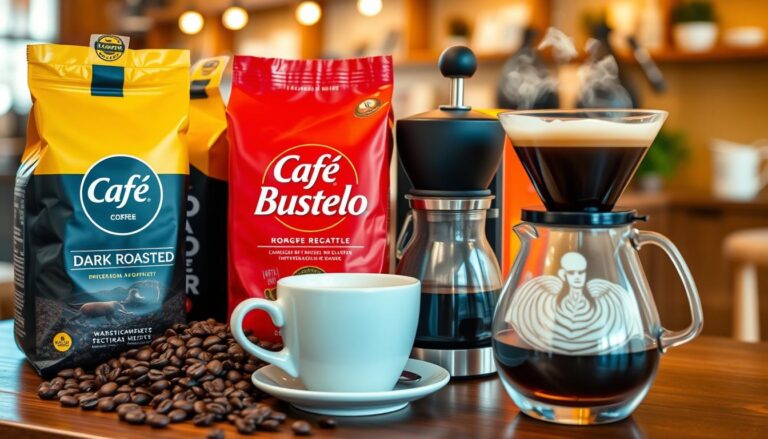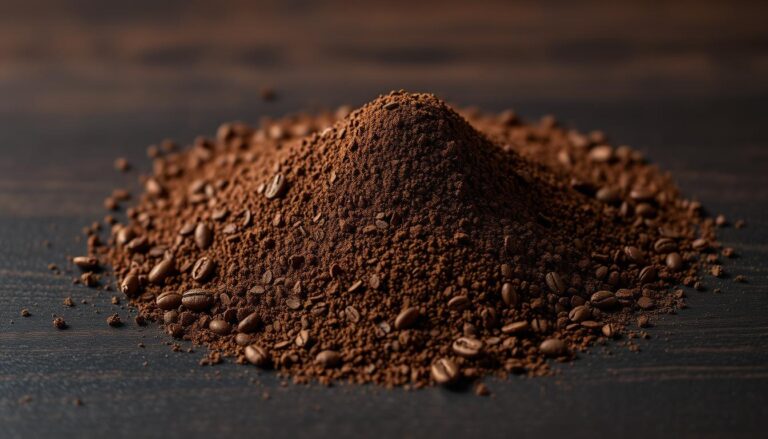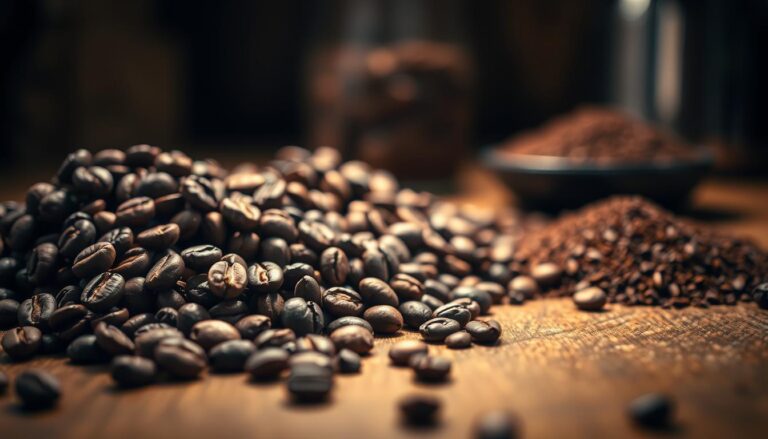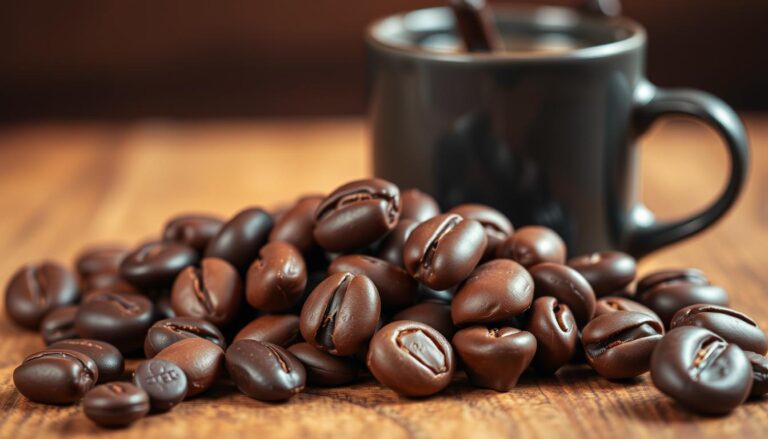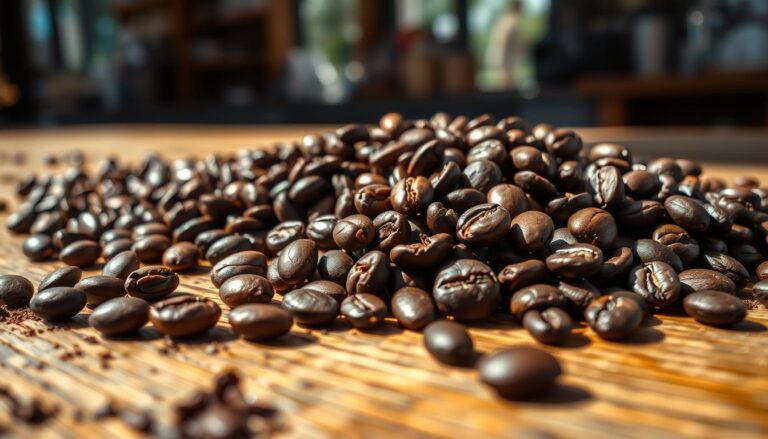Ever wondered why Cuban coffee is so loved by coffee fans? Does it really stand up to espresso? The question of whether Cuban coffee is stronger than espresso goes beyond caffeine. It’s about how each coffee is made and its taste.
In this article, we’ll look at how strong espresso is compared to Cuban coffee. We’ll find out what makes each coffee special. And we’ll figure out which one has more caffeine. Let’s dive into the debate and see which coffee is the strongest.
Cuban Coffee: What Sets It Apart?
Cuban coffee is known for its vibrant aroma and unique preparation methods. It offers a rich experience that sets it apart from traditional espresso. This beverage has deep roots in Cuba’s cultural tapestry, complementing the social fabric of the island.
The many variations of authentic Cuban coffee reflect local traditions. They highlight the beverage’s communal aspect, often enjoyed among friends and family.
Origins and Cultural Significance
The journey of coffee in Cuba began in the mid-18th century. It became a significant part of the Cuban lifestyle. As coffee became integrated into Cuban culture, it evolved into various forms, including the well-loved cafecito, a concentrated shot of espresso enjoyed in small cups.
The Cuban Revolution brought about a shift in the way coffee was perceived. It solidified its place as a symbol of national pride. Authentic Cuban coffee represents resilience and a shared identity, fostering connections among those who gather to sip it.
Preparation Methods
Distinct preparation methods contribute to the charm of Cuban coffee. A stovetop espresso maker known as a “moka pot” is used for a strong brew. This is perfect for creating flavorful variations.
The sweetness of Cuban coffee is often enhanced with sugar, making it a rich experience. The process of preparing Cuban coffee emphasizes the community spirit. It is frequently served in larger servings intended for sharing.
When considering Cuban coffee benefits vs espresso, the methods showcase a unique strength. The latter is often served in smaller quantities.
Flavor Profile
The flavor profile of Cuban coffee is an exquisite blend of robust and sweet notes. The brewing techniques lead to a more intense flavor compared to espresso. Its unique texture, along with the sweetness, plays a significant role in defining the overall experience.
Many coffee aficionados appreciate the complexity of Cuban coffee strength. They find it to provide an invigorating yet smooth taste that sets it apart from other coffee types.
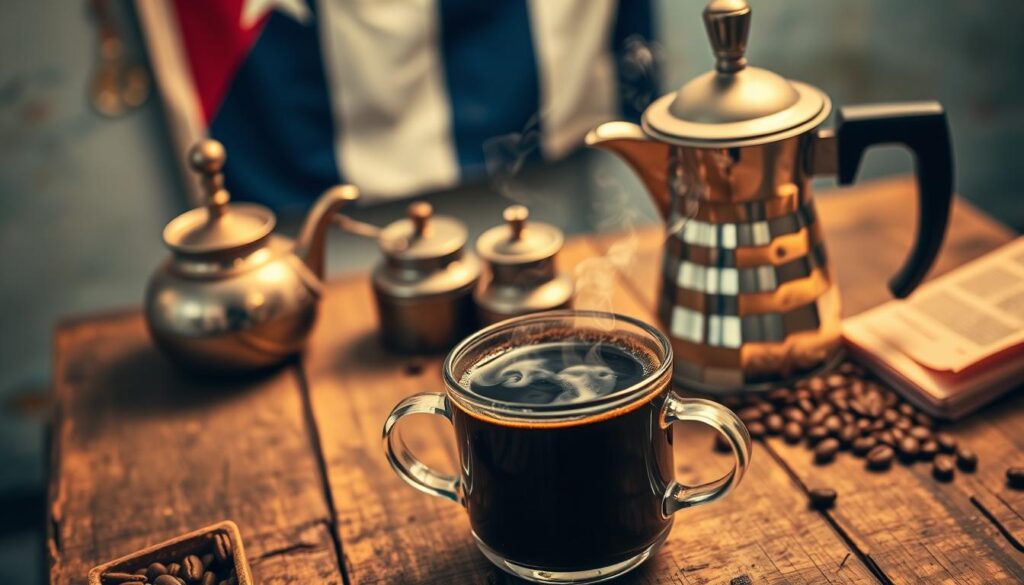
The Basics of Espresso: An Overview
Espresso is a favorite coffee drink that many love. Knowing about coffee brewing techniques makes you appreciate espresso more. It’s made by forcing finely ground coffee through high pressure, creating a strong shot full of flavor.
Brewing Techniques
To get the perfect espresso, you need to get the water temperature, grind size, and brew time just right. Here are the key points:
- Grind Size: You want a medium-fine grind for the best taste.
- Water Temperature: It should be between 195°F to 205°F (90°C to 96°C).
- Brew Time: Aim for 25 to 30 seconds for a perfect shot.
Espresso machines are the most common way to make espresso. But, stovetop Moka pots can also make delicious espresso-style coffee.
Common Varieties
Espresso comes in many types, each with its own taste. Here are some of the common varieties of espresso:
- Single Shot: A basic shot for a quick caffeine boost.
- Double Shot: Gives a richer flavor for a bolder taste.
- Ristretto: A shorter extraction, making it sweeter.
- Americanos: Espresso mixed with hot water for a lighter taste.
- Macchiato: Espresso topped with a small amount of froth.
- Lattes and Cappuccinos: Espresso mixed with milk in different amounts.
Espresso vs. Brewed Coffee
Espresso and brewed coffee are quite different. Espresso has a strong flavor and caffeine, while brewed coffee is milder but just as enjoyable. Here are the main differences:
| Aspect | Espresso | Brewed Coffee |
|---|---|---|
| Extraction Time | 25-30 seconds | 4-5 minutes |
| Flavor Intensity | Rich and bold | Milder and varied |
| Caffeine Content (per ounce) | 63 mg | 12-16 mg |
| Crema | Yes | No |
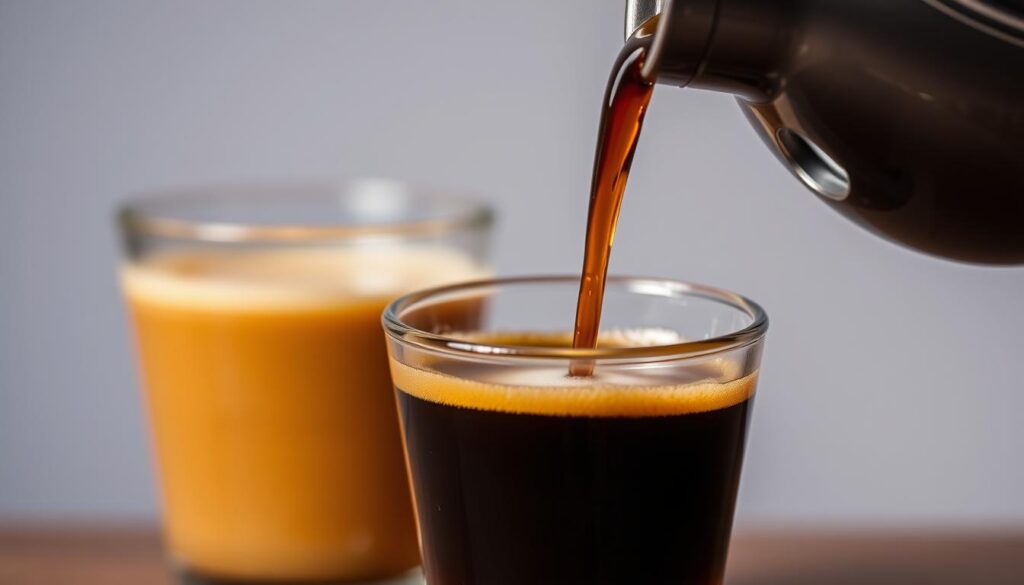
Comparing Strength: Cuban Coffee vs. Espresso
When we talk about Cuban coffee vs espresso, it’s all about caffeine. Both can give you a big energy boost. But, how they make you feel can be different.
Caffeine Content Analysis
Cuban coffee often has more caffeine because of how it’s made. It uses more robusta beans, which have more caffeine. Espresso’s caffeine can change based on the beans and brewing method. But, both are known for their strong caffeine kick.
Brewing Ratios
The way you brew affects the strength of your coffee. Cuban coffee is made with a stovetop espresso maker, making it richer. Espresso is made under high pressure, making it more concentrated. Your brewing method changes how you experience the coffee.
Taste and Strength Perception
Cuban coffee is known for its sweet, strong taste. Espresso has a complex taste but might seem bitter to some. Your taste preferences can make one seem stronger than the other.

Your Brewing Preferences: Choosing Between the Two
Choosing between Cuban coffee and espresso depends on your taste. Think about what you like in a coffee. This will help you decide.
Personal Taste Considerations
Your taste buds play a big role. Cuban coffee is sweeter and stronger than espresso. If you like sweet flavors, Cuban coffee might be for you. If you prefer a strong coffee, espresso could be better.
Best Uses for Each Type of Coffee
Cuban coffee is great for social times. It’s perfect for unwinding with friends. Espresso, on the other hand, is perfect for busy mornings. It gives you a quick caffeine boost.
Making the Choice: Factors to Weigh
When choosing, consider a few things:
- Convenience: Do you need a quick cup or a slow brew?
- Social Interaction: Will you share your coffee?
- Flavor Preference: Do you like sweet or strong flavors?
- Occasions: Is it for a casual drink or a boost?
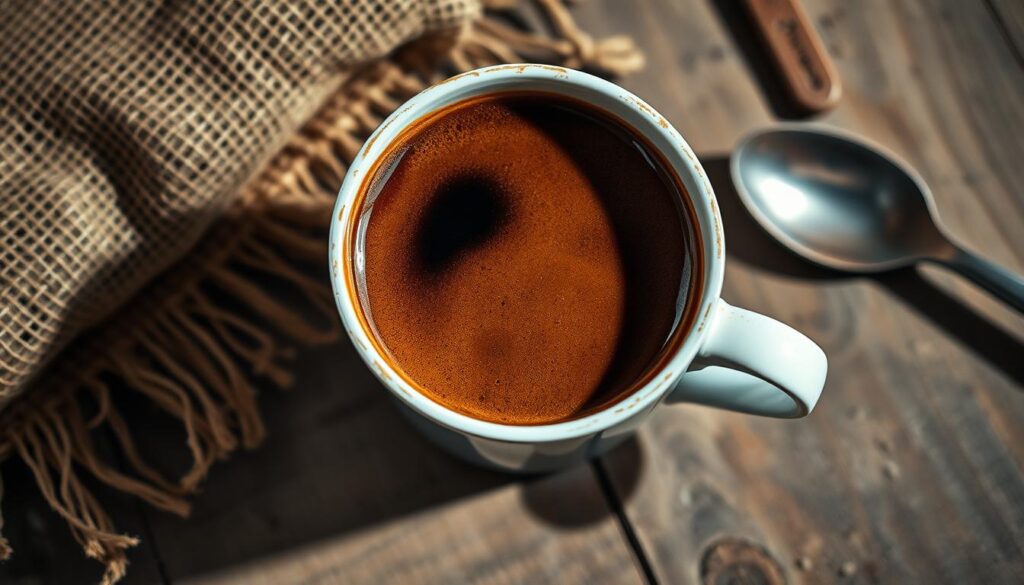
Conclusion: The Final Verdict on Strength
The debate on whether Cuban coffee is stronger than espresso is complex. Both have high caffeine levels and unique tastes. The strength of each drink depends on brewing methods and bean quality. Your personal taste is key in deciding what “strength” means to you.
Key Takeaways
Understanding the strength of Cuban coffee and espresso requires a detailed look at both. Cuban coffee is sweeter and richer, while espresso is more concentrated. You might find that neither is better; they each offer a special experience. Your choice will depend on your taste and brewing methods.
Final Thoughts on Coffee Experience
Your coffee journey is unique and personal. Coffee lovers should explore different brewing techniques and flavors. Each cup is a chance to learn more about your taste preferences. Enjoying every sip is part of the experience.
Recommendations for Coffee Lovers
Coffee lovers should try both Cuban coffee and espresso. Note how each drink fits into your day. Whether you prefer the boldness of espresso or the sweetness of Cuban coffee, let your taste guide you. This will make your daily coffee rituals more enjoyable.

